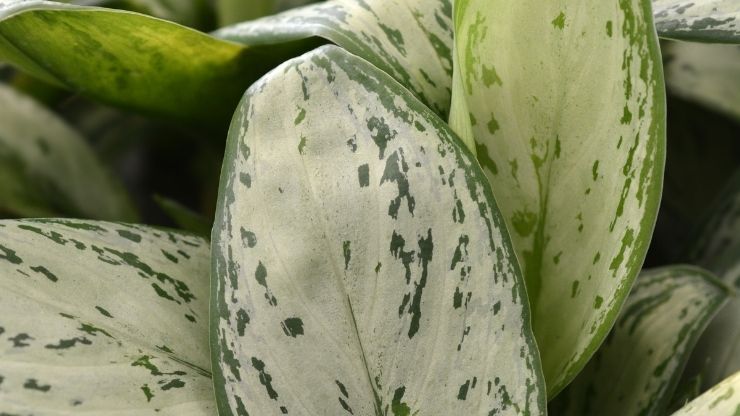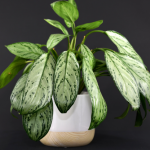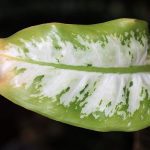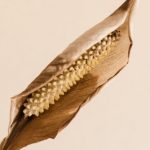Chinese evergreen (Aglaonema commutatum) is an easy-to-grow foliage plant, but you can run into problems if you don’t provide the right conditions. Luckily, it’s not hard to fix issues with this hardy houseplant. It will usually bounce back from minor neglect.
So, why is your Chinese evergreen turning yellow? Temperatures dropping too low, too much light, or a nutrient deficiency are the primary causes of yellowing leaves.
Let’s take a closer look at how you can fix these problems and get rid of those yellow leaves!
Related: How to Care for a Chinese Evergreen Houseplant
Temperatures Dropping Too Low
Cold injury is probably the most common cause of Chinese evergreen turning yellow. You may notice the leaves develop gray, greasy splotches at first, which then turn to a yellow color. This is a sure sign that you’ve allowed the temperature to drop too low.
Chinese evergreen requires temperatures of between 65 – 75 degrees F (18 – 24 degrees C). This is considered normal “room” temperature. However, if your home gets cold at night or you go on vacation and leave the heater off, you may have a problem.
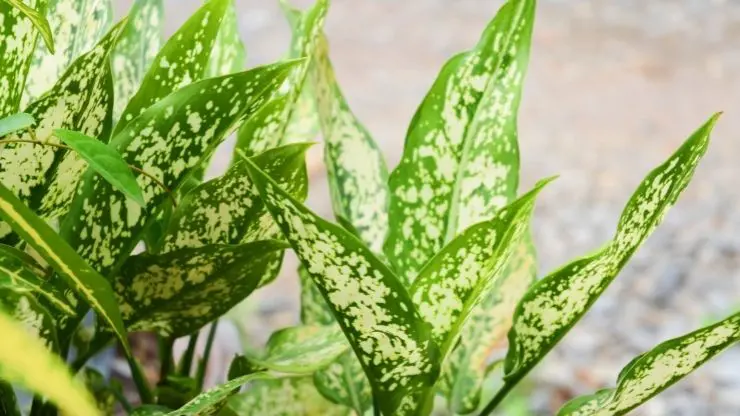
If the temperature drops below 60 degrees F (16 degrees C), this can permanently damage the plant’s delicate leaves. For the best results, make sure to always keep your thermostat set to 65 degrees F (18 degrees C) or above.
What to Do About Cold Injury
If your Chinese evergreen is damaged by the cold, all is not lost. You can still save the plant as long as it just has a few yellow leaves.
First, remove the damaged leaves by snipping them off at the base. Next, move the plant to a place where it will not be chilled by cold windows. Keep it away from blasts of cold air from opening doors or cooling vents.
Related: Should You Cut Off Dying Leaves From Your Houseplants?
Too Much Light
Considered a low light plant, Chinese evergreen may turn yellow if exposed to too much light. Native to the jungle floor, they need shady conditions to thrive. In fact, commercial growers grow them in 70 to 90 percent shade!
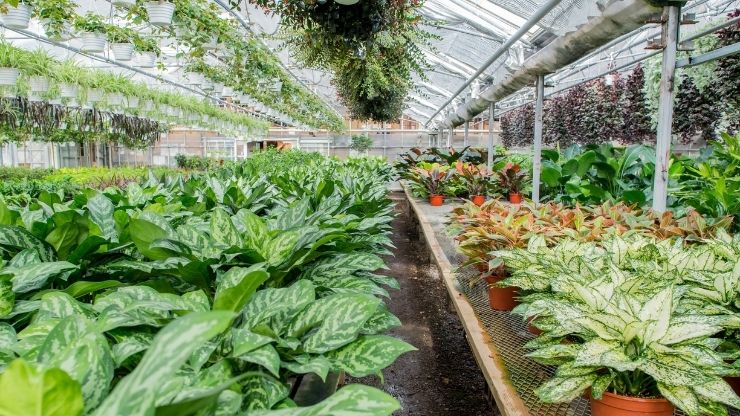
Another sign that your plant is getting too much light is leaves that grow stiffly upright instead of arching. They may also be pale in color with even paler leaf tips.
What to Do About Too Much Light
If you think too much sunlight is the cause of your yellowing plant, move it immediately to a shadier location. A north- or east-facing window is an ideal location for Chinese evergreen.
If you don’t have a north- or east-facing window available, place your plant at least 3 – 5 feet back from a sunnier window. Or try diffusing the light with gauzy curtains.
Related: Is Light From a Window Direct Sunlight for Houseplants?
Nutrient Deficiency
In rare cases, a nutrient deficiency could be the reason for your Chinese evergreen turning yellow. You’ll know this is the case when new leaves are yellow and small with kinked edges.
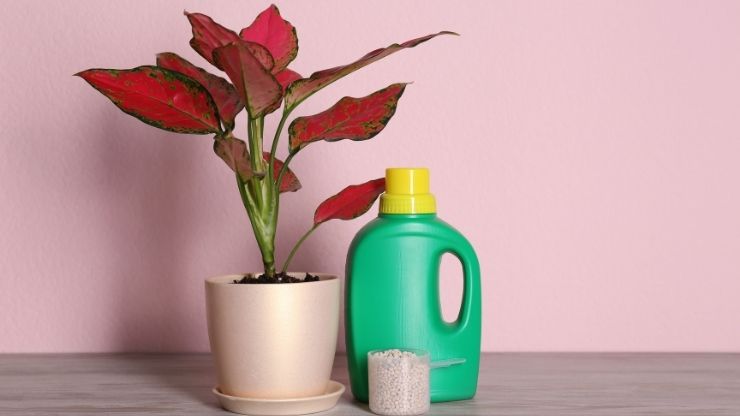
Copper deficiency is the culprit. There are a couple reasons this could happen:
- Root temperatures – Root temperatures below 65 degrees F (18 degrees C) for a prolonged period of time can limit the uptake of copper. (This is another reason why keeping the plant at optimal temperature is so important.)
- Deficient soil – If you’re using a soil that includes fertilizer (such as Miracle Gro), it may be old or the nutrients may be all used up. Otherwise, you may not be feeding your plant enough.
What to Do About Copper Deficiency
First, make sure you’re keeping temperatures above 65 degrees F (18 degrees C) at all times. If your plant has been too cold, move it to a warmer location and give it time to absorb more copper through its roots. Wait a week or two and see if there’s improvement.
If the temperature is fine, the next step is treating the plant with a micronutrient spray. I like 13 Essentials Foliar Spray because it contains all the micronutrients your plant needs (including copper). You have to dilute it before use, so read the instructions carefully.
Conclusion
If your Chinese evergreen is turning yellow, it’s most likely because the temperature is too low or the plant is getting too much sunlight. In some cases, a nutrient deficiency could be to blame.
To fix the problem, remove damaged leaves (they won’t recover), make sure temperatures are warm enough, and place in a low light area of your home. If you suspect a nutrient deficiency, treat with a micronutrient spray and/or repot the plant to refresh the soil.
Chinese evergreen is a hardy houseplant, and it can bounce back from yellowing as long as you catch the problem soon enough.

